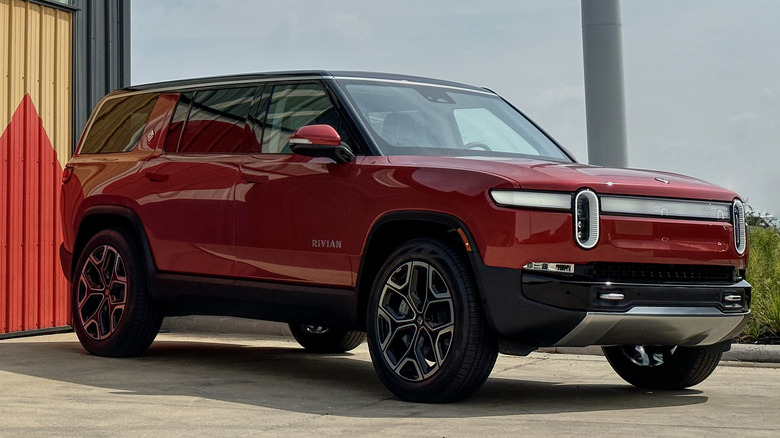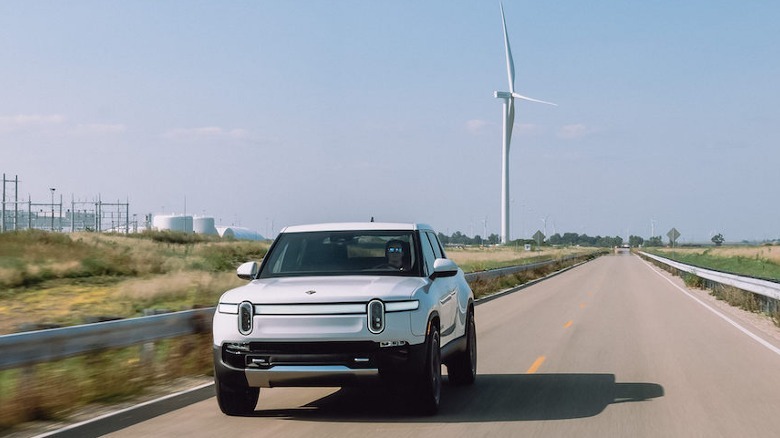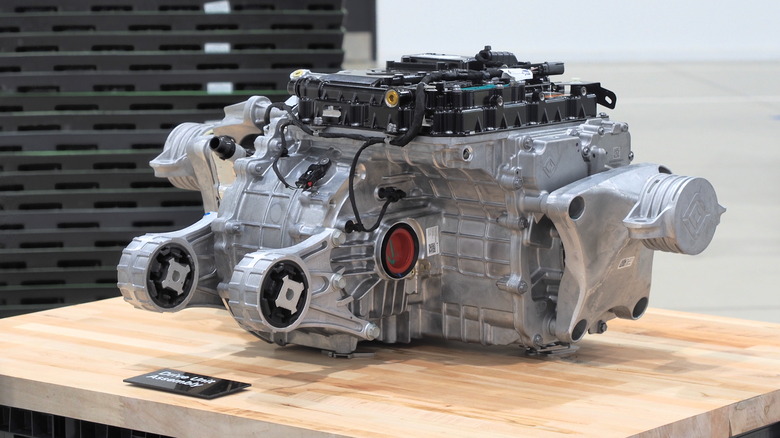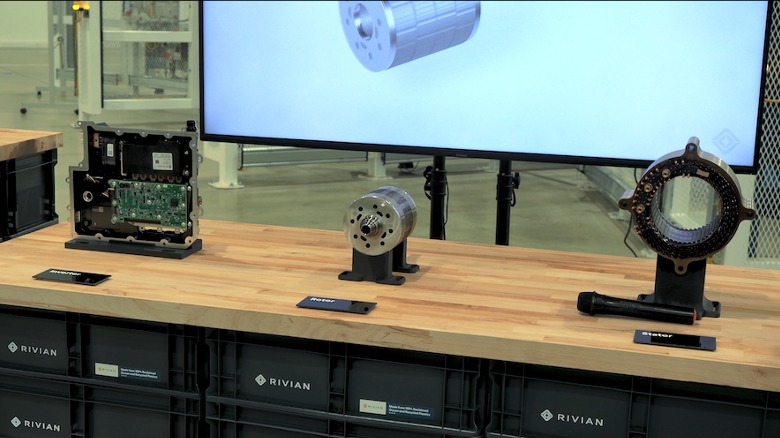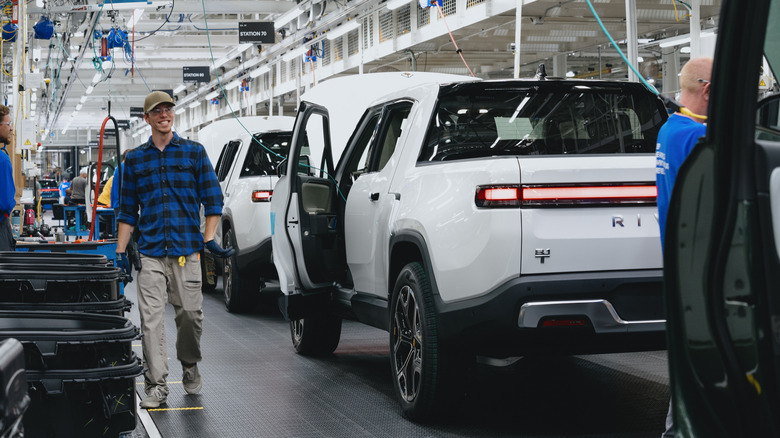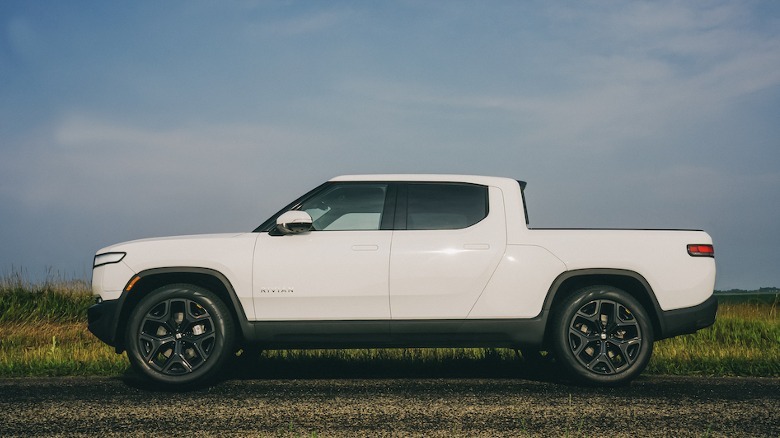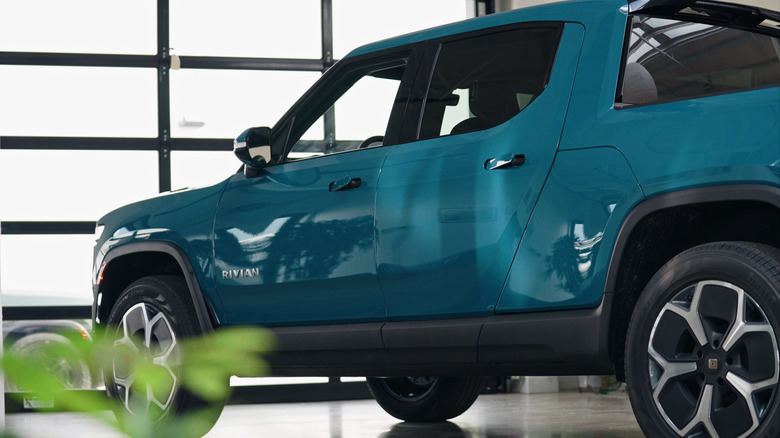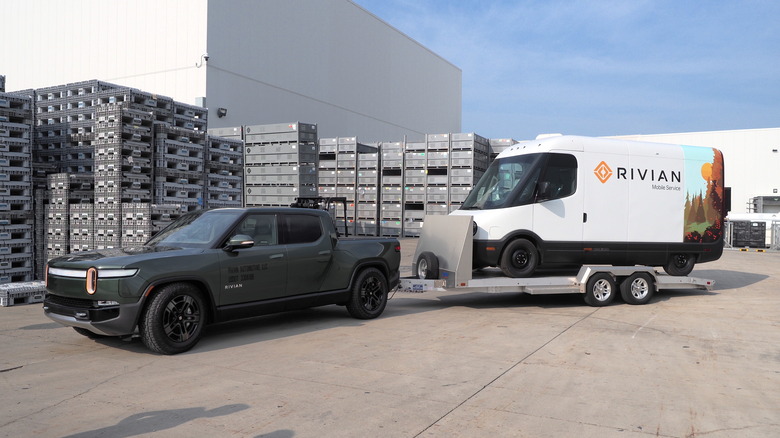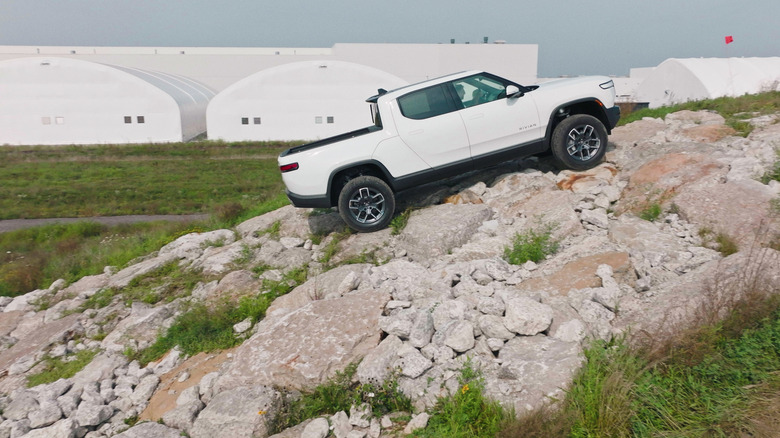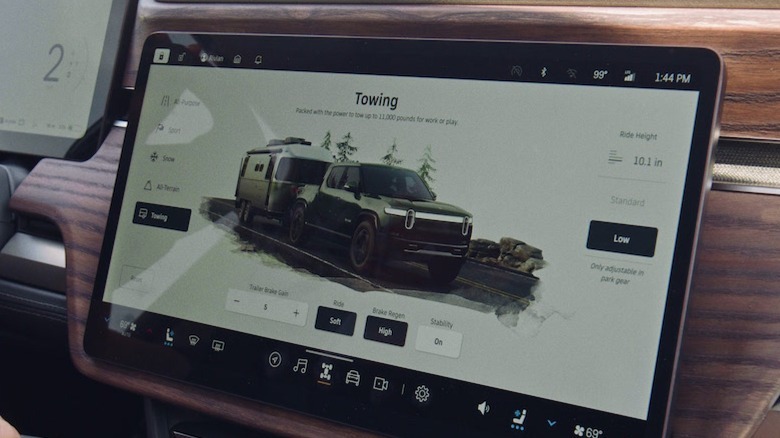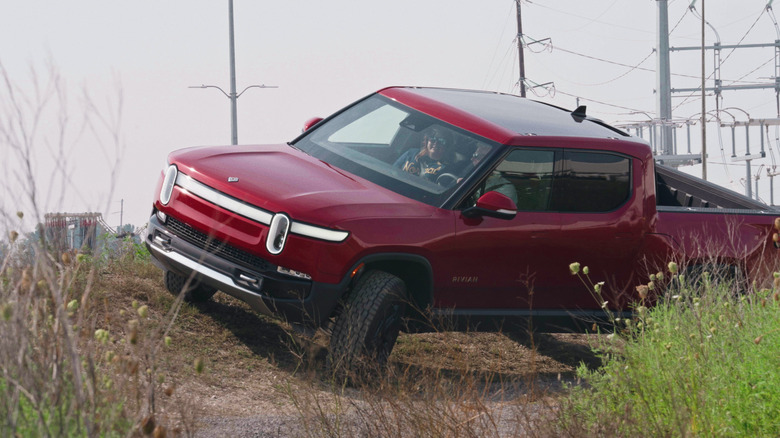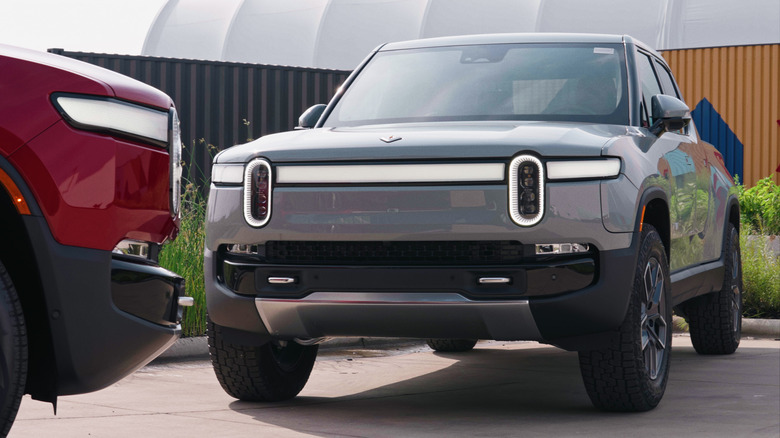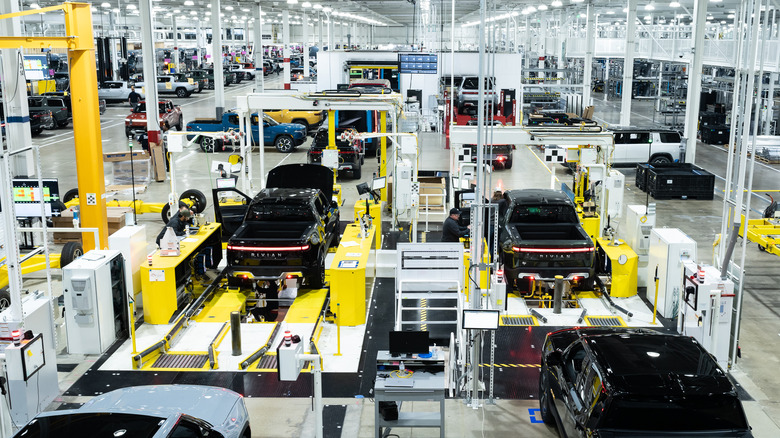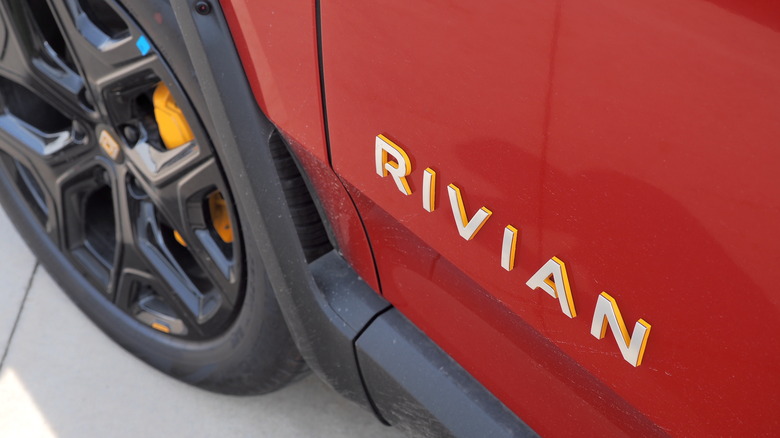Rivian R1 Dual-Motor First Drive: Cheaper R1S And R1T Are Only The Start
- More affordable than Quad-Motor R1
- Still blisteringly fast
- High quality, flexible interior
- Range increases
- Still not a cheap EV
- Staggered availability of all battery sizes
Rivian set out to impress at the flagship end of the market with its first R1T and R1S electric vehicles: now, it has to build versions that the rest of us can afford. The new R1 Dual-Motor series isn't quite the bargain which will crack the EV mass market wide open, but with pricing from $73,000 — versus $87,000 and up for the R1 Quad-Motor — it's definitely more attainable. Question is, though, has Rivian sacrificed some of its trucks' charm to hit that new price?
Out at Rivian's facility in Normal, IL., where the automaker invited SlashGear to test out the new Dual-Motor configuration back-to-back with the original Quad-Motor versions, it's a stark reminder that this is no longer some hopeful upstart in the EV world. The former Mitsubishi factory is unrecognizable, not to mention freshly expanded in order to accommodate production of the new Enduro drivetrain which is key to trimming R1 pricing (and to launching the upcoming Rivian R2 series).
Towering over Rivian's test track is a brand new 2.8 megawatt wind turbine, a conspicuous symbol of the automaker's green ambitions. In just a short while, that'll work with the plant's solar farm to give each new EV its first charge after it leaves the production line. What that charge is powering, though, is the even bigger news.
The Enduro drivetrain is Rivian's new secret sauce
The path Rivian has taken to Enduro is a reminder that saying "we build cars" covers a whole lot of territory. The original drive units were made to the automaker's design, but with components like the motors and gearboxes built externally and then shipped in for assembly. Though the result certainly wasn't short on power, it was complicated and not as efficient as some of Rivian's more frugal rivals.
Enduro, in contrast, represents integration: both of the design of the drive unit and its production. "The dual-motor really represents to us an important step," R.J. Scaringe, Rivian CEO, explained, "because it's the first time we've fully integrated everything into the drive unit."
The motor, gearbox, and inverter are all not only Rivian-designed but produced in-house. That takes place in a 620,000 square foot expansion of the automaker's facility in Normal, IL, which now measures in at more than 4 million square feet. Rather than modify the R1 platform, Rivian opted to use the same housing as for its original motors, though Enduro is significantly smaller not to mention around 60 pounds lighter.
More flexible, more affordable
Equally important is the flexibility of the new design. Rivian's EV production goals are big, but so far they've struggled to hit them: the availability of semiconductors proved to be a huge bottleneck. Enduro was designed with variations in components from the outset, such as working with either silicon or silicon-carbide technology. In short, Rivian should be able to keep building vehicles even if some of its suppliers are feeling the pinch.
All of Rivian's commercial vehicles — including the electric van it builds for Amazon — now use the Enduro design. R1 Dual-Motor versions, meanwhile, began production in May of this year. In addition to a number of battery pack sizes, Rivian also has two versions of the R1S and R1T Dual-Motor: Standard and Performance.
The changes to the latter are all in software, increasing torque and horsepower. It also adds a Sport drive mode to the standard All-Purpose, Snow, All-Terrain, and Towing, plus a "Lowest" ride height option. For now, the Performance option adds $5k to the sticker price; Rivian says it hasn't decided whether it'll offer it as a post-purchase upgrade, though the R1's architecture would theoretically support that.
What's clear now, though, is the potential cost advantages. Rivian saw 35% cost savings in its overall bill-of-materials by using Enduro and an LFP battery in its commercial vans, and expects similar from the R1 with the standard pack. That unlocks a broader range of pricing for the Dual-Motor models.
Less power, but it's tough to imagine missing it
From behind the wheel of the dual-motor R1S or R1T, in all but perhaps one situation, it's actually difficult to tell much difference between it and the quad-motor versions. That familiar surge of electric speed is still present and correct: while the quad-motor R1S will do 0-60 mph in a supercar-threatening 3.0 seconds, the dual-motor EV in Performance form takes just 3.5 seconds. Even the regular dual-motor R1 only takes 4.5 seconds.
That's because you still have at least 533 horsepower and 610 lb-ft of torque to play with (or 665 hp and 829 lb-ft in the Performance Dual-Motor AWD). Less than the 835 hp and 908 lb-ft in the quad-motor, certainly, but in the grand scheme of going fast, electrically, none of the three variations are in any way lacking.
Most people, I suspect, won't even notice the 0-60 difference (Rivian's team agrees). Perhaps, if you're slinging your three-row electric SUV around a race track, you'd miss the quad-motor's torque vectoring, where power to each wheel can be independently controlled. Again, I wager that the number of owners who will push the limits in that way are a fraction of a percentage.
Towing is good, with OTA usability tweaks to come
Towing is another area where the R1 is probably over-specified. In Dual-Motor form, the R1T is rated for up to 11,000 pounds, and the R1S up to 7,700 pounds. Rivian says that a reasonable percentage of owners do actually tow, though won't say quite how much or how frequently. Still, even with a 9,000 pound Rivian van and a trailer hanging off the back, what was noticeable was just how unbothered an R1T Dual-Motor seemed.
We'll also see Rivian tap its over-the-air (OTA) update technology to improve the towing experience. Right now, for instance, the blind spot monitoring system doesn't take into account the length of whatever is tagged on the back of the EV. That'll change in an upcoming tow-centric update. Rivian is also planning to expand its other advanced driver assistance systems (ADAS) to better work when towing, as well as add more camera modes so that you can monitor what's hitched while on the move.
The biggest change is off-road
Where the dual-motor configuration shows its differences is away from the asphalt. Rivian's original EV has ten drive modes to choose between, including All-Terrain, Rally, Drift, Rock Crawl, and Soft Sand settings. Sacrifice two of the four motors, and you only get All-Terrain for your off-roading needs.
There's something oddly anticlimactic about tackling an off-road course in the quad-motor R1 EVs. With the trucks' ability to control the torque going to each corner, clambering up tricky rock climbs is basically a matter of pointing the blunt nose in the direction you want to go, and hitting the accelerator. The Rivian just does all the tricky stuff, like modulating power to adjust for grip, in the background.
The dual-motor versions, in contrast, feel a lot more like traditional off-road trucks. Rivian uses brake-based torque vectoring in order to control the distribution of power from left to right across each axle. In short, if your left rear wheel is slipping, the R1 dual-motor will apply the brakes to it, driving torque to the right rear wheel instead.
Not worse, just different
The result feels a little more involved from the driver's seat. Like a gas-powered truck, you benefit from picking a strategic line and, if you start to lose traction, a judicious application of more throttle is generally required to help the other, still-gripping wheels to propel you forward.
What electrification brings, of course, is a much greater sense of precision. There's no waiting for a combustion engine to spool up; no need to flutter the gas in order to take into account that inevitable lag. Squeeze the R1's pedal and the results are instantaneous and far more straightforward to predict.
There could well be times, indeed, that the dual-motor proves more flexible than the quad. With a separate motor for each corner, Rivian's original AWD design is limited to the individual output of each of those motors going to each wheel. In the dual-motor, the brake-based torque vectoring means the full power of the Enduro motor on that axle can be pushed to just one side of the truck.
Range is the winner here
The other conspicuous-by-its-absence drive mode is Conserve. In the quad-motor R1 models, while you can decouple the rear motors to prioritize range over power, that requires switching into a dedicated mode. For the dual-motor R1 variants, engaging and disengaging the rear axle can be done on-the-fly, the EV automatically deciding when to bias toward traction and when to coax out more range.
That can pay dividends, if you're willing to cough up the cash for Rivian's biggest batteries. For the R1T Dual-Motor, you're looking at as much as 410 miles with the Max battery pack, 352 with the Large, or 270 with the Small. An R1S Dual-Motor, meanwhile, drops to 390 miles, 352 miles, or 260 miles respectively.
Wheels and tires play an outsized role in how much driving you'll do on a charge. For the R1T and R1S Performance Dual-Motor with the Large battery, for example, the EPA estimated range is 307 miles on the 20-inch wheels, 352 miles on the 21-inch wheels, and 341 miles on the 22-inch wheels.
The basis of the upcoming Rivian R2
What we're unlikely to see is a single-motor configuration of the R1S or R1T. That, according to Scaringe, is because the R1 series is — and will remain — the flagship of Rivian's line-up. Even though many drivers probably would do just fine with one motor rather than two or four, it just doesn't fit with the brand's positioning.
Instead, we'll have to wait until the upcoming Rivian R2 series for that. The automaker's smaller models — expected to include a two-row SUV, the R2S — will be more intentionally targeted at the mass market (or, at least, a more-mass market than Rivian's $73k+ current EVs).
Unfortunately, we'll also have to wait until around 2026 for the first of the R2 series to arrive. By then, the electric vehicle space is only going to be more crowded: SUVs aimed specifically at the mass-market, like the Chevrolet Blazer EV and Honda Prologue, will be out there competing on price and badge-familiarity.
Rivian R1 Dual-Motor Verdict
For now, though, it's hard not to conclude that the R1 Dual-Motor versions are the pick of Rivian's current line-up. Sure, power may be down versus the Quad-Motor configuration, but the only real sacrifice there is to bragging rights. Range is up (battery-depending), meanwhile, and though the delivery feels different, the off-road performance isn't really lacking in comparison.
Even the visual differences are fairly negligible: look for black badge accents and silver brake calipers, versus the Quad-Motor's bright yellow. Beyond that, though, there's the same high-quality interior, the same big touchscreen dashboard (which, depending on your stance, may rely on that touchscreen too much and not have enough physical controls), and the same 200+ kW DC fast charging support.
Clearly, even this more efficient, more affordable R1 Dual-Motor series is still out of the reach of many would-be EV owners. The R1T and R1S remain a luxury pickup and SUV pair, regardless of whether they have two motors or four. All the same, Enduro's recipe for more efficiency with less bulk and lower costs leaves the R1 feeling less like a lucky fluke and more the sign of an automaker with strategy, even if we'll still need to be patient to see that play out on the road.
